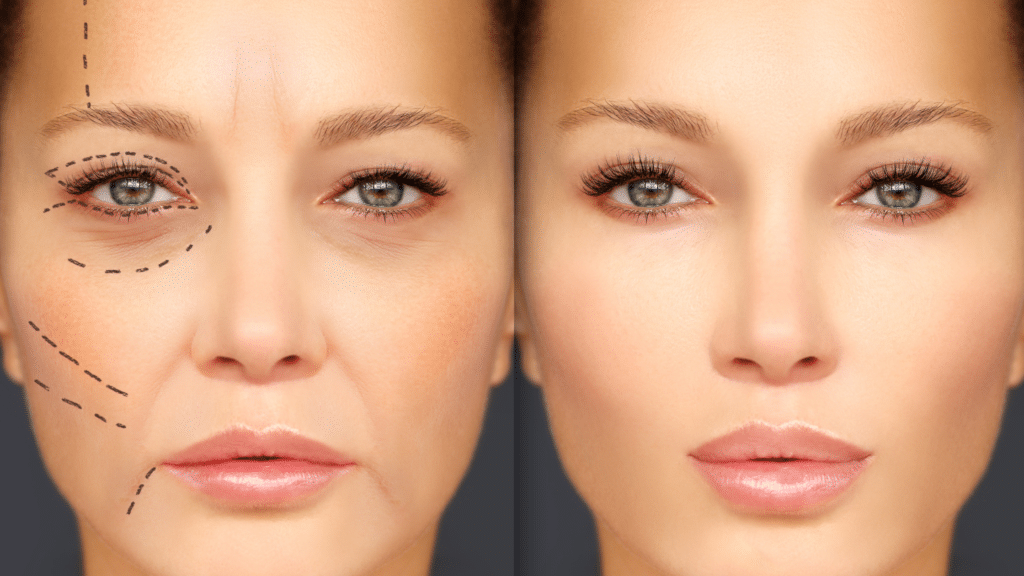In recent years, a surprising 20% increase in botox treatments among men has shattered the stereotype that cosmetic procedures are solely a woman’s domain. This surge reflects a growing acceptance and desire among men to look their best, challenging age-old perceptions of masculinity. Botox for men, or “brotox,” as it’s playfully known, is not just about vanquishing wrinkles; it’s about boosting confidence and presenting the best version of oneself in both personal and professional spheres. As society evolves, so does the approach to self-care, with more men now embracing botox as a tool for maintaining their appearance.
Understanding Revision Botox Treatments
Revision Basics
Revision botox treatments are specialized procedures. They address issues from previous botox applications. Men may seek these if initial results were unsatisfactory or if their aesthetic goals have changed.
It’s crucial to understand that revision treatments can be more complex than first-time botox injections. The practitioner must consider the existing alterations to facial muscles and plan accordingly.
Why Men Opt for Revision
Several factors drive men towards revision botox treatments. Dissatisfaction with initial outcomes is a common reason. Some men find the effects too subtle or overly pronounced, prompting them to seek adjustments.
Changes in personal aesthetics or life circumstances also play a role. As men age or as their preferences evolve, they might desire different results from what they initially wanted.
Setting Expectations
Realistic expectations are key when considering revision botox for men. A thorough consultation before undergoing any procedure is essential. It helps set achievable goals and minimizes the risk of further dissatisfaction.
Professionals should provide clear information on what can and cannot be corrected with revision treatments. Transparent communication ensures that clients make informed decisions about proceeding with revisions.
Initial vs. Revision Botox Procedures
Procedural Differences
Men seeking Botox treatments often notice a shift in their experience from the initial procedure to any subsequent revisions. Initially, the focus lies on targeting specific areas where wrinkles and lines are most prominent. Precision is key, with practitioners aiming for a natural, yet noticeably improved appearance.
Revision treatments, however, may require adjustments in technique. This stems from the body’s adaptive response to Botox over time. Practitioners might alter injection sites or modify dosages to achieve desired results. The goal remains consistent: to refresh and maintain a youthful look without overcorrection.
Body Response
Over time, men’s bodies can become more adept at metabolizing Botox, leading to potentially shorter durations of effect. This necessitates a nuanced approach for revision procedures. Understanding how an individual’s body responds helps tailor each session for optimal outcomes.
Adjustments may include focusing on different facial muscles that have started compensating for previous treatments’ effects. It’s about staying one step ahead of the body’s natural adaptation processes.
Misconceptions Addressed
Many believe that revision treatments are less effective or unnecessary if initial injections were successful. However, maintaining results often requires periodic revisions due to the temporary nature of Botox.
Revisions are not about correcting mistakes but adapting to changes in how muscles respond over time. They ensure continued satisfaction by fine-tuning earlier results based on current needs and expectations.
Preparing for Revision Botox Sessions
Medication Avoidance
Before undergoing a revision botox session, it’s crucial to avoid certain medications and supplements. These substances can increase the likelihood of bruising at the injection site. Specifically, individuals should steer clear of blood thinners and anti-inflammatory drugs for at least a week prior to their appointment.
Avoiding these medications helps minimize potential side effects, ensuring a smoother recovery process.
Treatment Disclosure
Disclosing previous botox treatments is essential when preparing for a revision session. Patients should be open about their past experiences, including any adverse reactions or unsatisfactory outcomes. This transparency allows practitioners to tailor the procedure more effectively, potentially adjusting toxin groups or injection sites based on historical data.
This step is critical in setting realistic expectations and achieving desired results.
Consultation Questions
During the consultation phase, asking specific questions can clarify expectations and procedure details. It’s advisable to inquire about:
- The expected duration of results post-revision.
- Any changes in care routines needed post-procedure.
- The possibility of combining botox with other cosmetic procedures like eyelid surgery.
Gathering this information ensures patients are well-informed and comfortable with the planned approach.
Selecting the Right Practitioner
Experience Matters
It’s crucial to choose a practitioner skilled in revision botox treatments specifically for men. This expertise ensures they understand the unique facial structures and skin types that men have.
Look for professionals who highlight their experience with male clients. They should be familiar with different techniques that cater to men’s aesthetic goals. A practitioner’s ability to adjust their approach based on an individual’s needs can make a significant difference in the outcome.
Research Tips
Start by examining before-and-after galleries focusing on male clients. These visuals provide insight into the practitioner’s skill level and how they tailor their procedures for men.
Credentials are equally important. Verify their qualifications and any specialized training in botox applications for men. It reassures you of their competence and commitment to high standards in cosmetic treatments.
Initial Consultation
An initial consultation is your opportunity to assess compatibility with the practitioner. During this meeting, discuss your concerns and desired appearance post-treatment.
This time allows you to gauge their communication style and whether they genuinely understand your objectives as a man seeking botox treatment. Comfort level is key, as it impacts your overall satisfaction with both the process and results.
Aftercare for Enhanced Results
Activity Limits
After receiving cosmetic treatment, it’s crucial to limit certain activities. Avoid strenuous exercise for 24 hours. This helps prevent any increase in blood pressure that could disperse the product too quickly.
Also, stay upright for at least four hours post-treatment. Lying down or bending over might shift the botox, affecting the natural look of the results.
Skincare Tips
Careful skincare enhances results and minimizes side effects. Avoid rubbing or massaging the treated area for a few days. This action can spread botox to unintended areas, altering its effect.
Use gentle cleansers and moisturizers to keep skin hydrated without irritating the treatment area. Steer clear of chemical peels or abrasive treatments until fully healed, usually a few weeks post-injection.
Follow-Up Care
Following up with your practitioner is key to achieving optimal benefits from botox for men. They assess progress and determine if touch-ups are necessary to refine results or address any altered anatomy due to initial injections.
This step ensures satisfaction with your refreshed appearance and contributes significantly to sexual wellness by boosting confidence without concerns like erectile dysfunction sometimes associated with botched procedures.

Warning Signs
Be vigilant about signs that require immediate medical attention. Unusual symptoms such as difficulty breathing, vision problems, or severe skin reactions around the injection site may indicate complications.
Promptly contacting a healthcare provider ensures quick resolution of these rare but critical issues, safeguarding both health and cosmetic outcomes.
Benefits and Risks of Revision Botox
Improved Symmetry
Revision Botox can lead to enhanced facial symmetry. This is crucial for men seeking a more balanced appearance. It corrects irregularities from previous treatments.
Men often notice the difference right away. Their faces look more aligned, boosting confidence.
Natural Results
Another benefit is achieving natural-looking outcomes. Skilled practitioners use revision Botox to fine-tune results, avoiding overdone looks.
Patients appreciate the subtle enhancements. They feel their appearance reflects their true self without seeming artificial.
Temporary Bruising
On the risk side, temporary bruising is common after revision procedures. The area treated might show signs of discoloration or swelling.
This usually fades within a week or two. Following aftercare instructions can help speed up recovery.
Dissatisfaction Risk
There’s always a chance of dissatisfaction with the outcomes. Expectations might not align with reality, leading to disappointment.
Choosing an experienced practitioner minimizes this risk. They can provide realistic expectations and skilled application.
Minimizing Risks
To reduce risks, selecting the right practitioner is key. Look for someone with extensive experience in revision Botox for men.
Adhering to aftercare instructions also plays a critical role in minimizing complications and ensuring satisfactory results.
Achieving Refined Outcomes with Revision Botox
Treatment Goals
Collaborating closely with your practitioner is key to refining treatment goals. Open dialogue about past experiences can guide adjustments for future sessions. This ensures the application of reconstituted botox or botulinum toxin meets your unique aesthetic desires.
They understand that each individual’s skin reacts differently to treatments. Therefore, they might suggest targeting new areas or revising the dosage used in previous sessions. Such tailored approaches help in minimizing facial wrinkles and achieving more natural-looking results.
Incremental Adjustments
Making small changes can significantly impact the appearance of aging skin. Practitioners may adjust the focus from broader areas like frown lines to more specific concerns through techniques such as facial fat transfer or targeted fat removal.
These adjustments are not just about adding or reducing botox; they’re about strategically enhancing your features. For instance, combining botulinum toxin type treatments with other procedures like skin resurfacing could offer a comprehensive approach to meeting your aesthetic goals.
Patience and Communication
Patience is crucial when aiming for refined outcomes with revision botox. Results often develop gradually, and achieving perfection might require multiple sessions.
Open communication throughout this journey allows you to express any concerns or dissatisfaction openly. Your practitioner can then make necessary modifications using tools such as tiny sutures or adjust strategies for better toxin control, ensuring each step brings you closer to your desired look.
Making Informed Decisions on Further Treatments
Treatment Evaluation
After undergoing revision botox, it’s crucial to assess the results critically. Satisfaction with the outcomes plays a significant role in deciding on additional treatments. It involves comparing before and after images, noting improvements in lines and overall facial aesthetics.
Men should consider their long-term aesthetic goals too. If the desired look isn’t achieved, further injectable treatments might be necessary. However, one must weigh the benefits against potential complications like tissue damage or muscle paralysis.
Health Considerations
Spacing between botox sessions is vital for maintaining skin health. Too frequent treatments can lead to resistance, diminishing effectiveness over time. A study showed that optimal spacing could prevent such issues while ensuring lasting results.
Doctors also monitor blood flow and paralysis rates in treated areas during follow-ups. This analysis helps tailor a treatment plan that avoids overuse of botox, reducing risks of adverse effects.
Seeking Advice
If unsure about further botox procedures or facing unexpected results, seeking a second opinion is wise. Different specialists can offer varied insights based on your medical history and current condition.
They might suggest alternative strategies or highlight aspects of your initial treatment plan requiring adjustment. This step ensures you make informed decisions aligned with your health and aesthetic aspirations.
Final Remarks
You’ve navigated the ins and outs of revision Botox treatments, from the initial steps to aftercare and beyond. Understanding the journey, choosing the right professional, and knowing what to expect post-procedure empowers you to achieve those refined results you’re aiming for. It’s clear that while both benefits and risks exist, being well-informed helps you make decisions that align with your goals. Remember, this isn’t just about looking good—it’s about feeling confident in your skin.
Now’s the time to take action. If revision Botox is on your radar, don’t sit back. Reach out to a trusted practitioner and discuss your options. Your path to enhanced results starts with that first step. Make it count.
Frequently Asked Questions
What is Revision Botox for men?
Revision Botox targets specific areas where initial Botox treatments may not have achieved desired results, offering men a refined look.
How does Revision Botox differ from initial procedures?
Revision Botox fine-tunes previous outcomes, addressing any imperfections or asymmetries post-initial treatment.
What should I do to prepare for a Revision Botox session?
Choose a reputable practitioner and discuss your aesthetic goals. Avoid blood-thinning medications to reduce bruising.
How do I select the right practitioner for my Revision Botox?
Look for experienced professionals with proven track records in male aesthetics and revision treatments. Credentials matter.
What are the aftercare tips following Revision Botox?
Minimize exercise and avoid touching the treated area for 24 hours to ensure optimal results.
What are the benefits and risks of undergoing Revision Botox?
Benefits include improved symmetry and refinement of previous treatments, while risks involve potential bruising or dissatisfaction if not performed by an expert.
How can I ensure refined outcomes with my Revision Botox treatment?
Communicate clearly with your practitioner about expectations and follow all pre- and post-treatment advice closely.











